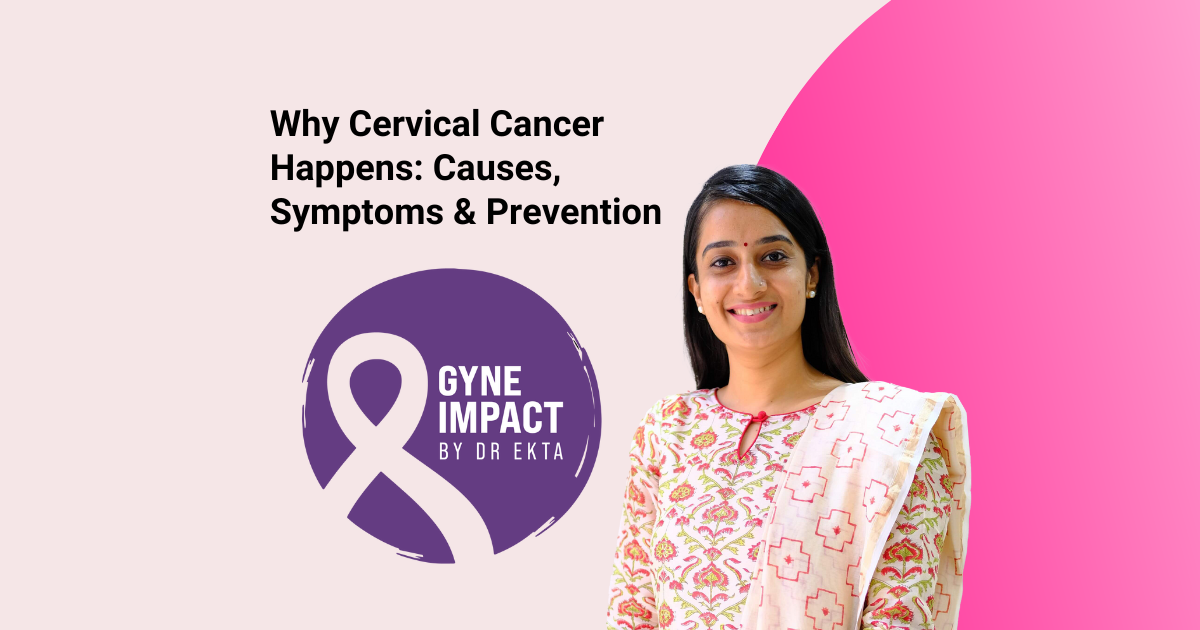Why does cervical cancer happen? Cervical cancer remains one of the most common cancers affecting women worldwide. Despite advancements in medicine, it continues to be a significant health concern. The good news is that cervical cancer is largely preventable, and understanding its causes, symptoms, and preventive measures can make a profound difference in women’s lives.
What Causes Cervical Cancer?
The primary cause of cervical cancer is persistent infection with certain types of the human papillomavirus (HPV). HPV is a sexually transmitted virus that infects nearly all sexually active individuals at some point in their lives. While most HPV infections clear up on their own, some high-risk strains, such as HPV-16 and HPV-18—can lead to the development of cervical cancer over time.
However, HPV is not the only factor. Several other risk factors contribute to the development of cervical cancer, including:
1. Weakened Immune System
A healthy immune system can fight off HPV infections effectively. However, women with weakened immune systems—due to HIV, organ transplants, or certain medications, have a higher risk of developing cervical cancer.
2. Smoking
Smoking not only weakens the immune system but also exposes the cervix to harmful chemicals that can damage cervical cells, making them more vulnerable to HPV infection.
3. Long-Term Use of Oral Contraceptives
Studies suggest that using birth control pills for more than five years may slightly increase the risk of cervical cancer. However, this risk decreases once the pills are discontinued.
4. Multiple Pregnancies
Women who have had multiple full-term pregnancies are at a higher risk of developing cervical cancer, possibly due to hormonal changes or a weakened immune response.
5. Family History
A genetic predisposition may play a role in cervical cancer risk. Women with a close family member who had cervical cancer might be more likely to develop the disease themselves.
Recognizing the Symptoms of Cervical Cancer
One of the most concerning aspects of cervical cancer is that it often does not cause noticeable symptoms in its early stages. This is why regular screenings are crucial. However, as the disease progresses, some common symptoms may include:
- Abnormal vaginal bleeding (between periods, after intercourse, or postmenopausal bleeding)
- Unusual vaginal discharge (watery, bloody, or foul-smelling)
- Pelvic pain or discomfort during intercourse
- Increased urinary frequency or pain during urination
If any of these symptoms persist, it is essential to seek medical attention immediately. Early detection can make a significant difference in treatment outcomes.
How to Prevent Cervical Cancer
While cervical cancer is a serious condition, it is also one of the most preventable types of cancer. Here are some effective ways to reduce the risk:
1. HPV Vaccination
The HPV vaccine is one of the most powerful tools in preventing cervical cancer. It protects against the high-risk HPV strains responsible for most cases. The vaccine is recommended for girls and boys between the ages of 9 and 26, ideally before they become sexually active.
2. Regular Pap Smears and HPV Testing
Routine Pap smears and HPV testing can detect abnormal cervical cells before they turn cancerous. Women should start screening at age 21 and follow their doctor’s recommendations regarding frequency.
3. Practicing Safe Sex
Using condoms and limiting the number of sexual partners can lower the risk of HPV infection and, consequently, cervical cancer.
4. Quitting Smoking
As mentioned earlier, smoking increases the risk of cervical cancer. Quitting smoking can significantly reduce this risk and improve overall health.
5. Maintaining a Healthy Immune System
A strong immune system can help fight HPV infections naturally. Eating a balanced diet, exercising regularly, and managing stress can contribute to a healthier immune system.
The Importance of Spreading Awareness
Raising awareness about cervical cancer is crucial in preventing its spread and ensuring early detection. Many women still lack access to proper screening and vaccination programs, particularly in low-income regions. By educating communities about the importance of prevention, we can save countless lives.
As an oncologist, I strongly advocate for open conversations about cervical cancer. Many women hesitate to discuss reproductive health issues due to stigma or fear. Encouraging regular medical check-ups and providing accurate information can help break these barriers.
Final Thoughts: Taking Action Against Cervical Cancer
Understanding why cervical cancer happens is the first step toward prevention and early detection. While HPV remains the leading cause, other factors such as smoking, weakened immunity, and lifestyle choices play a role. By prioritizing HPV vaccination, regular screenings, and healthy lifestyle habits, we can significantly reduce the burden of cervical cancer.
I urge every woman to take charge of her health. Schedule routine screenings, stay informed, and encourage others to do the same. Together, we can work towards a future where cervical cancer is no longer a major threat to women’s health.
Have you had your Pap smear or HPV vaccine yet? If not, now is the time to take action!

